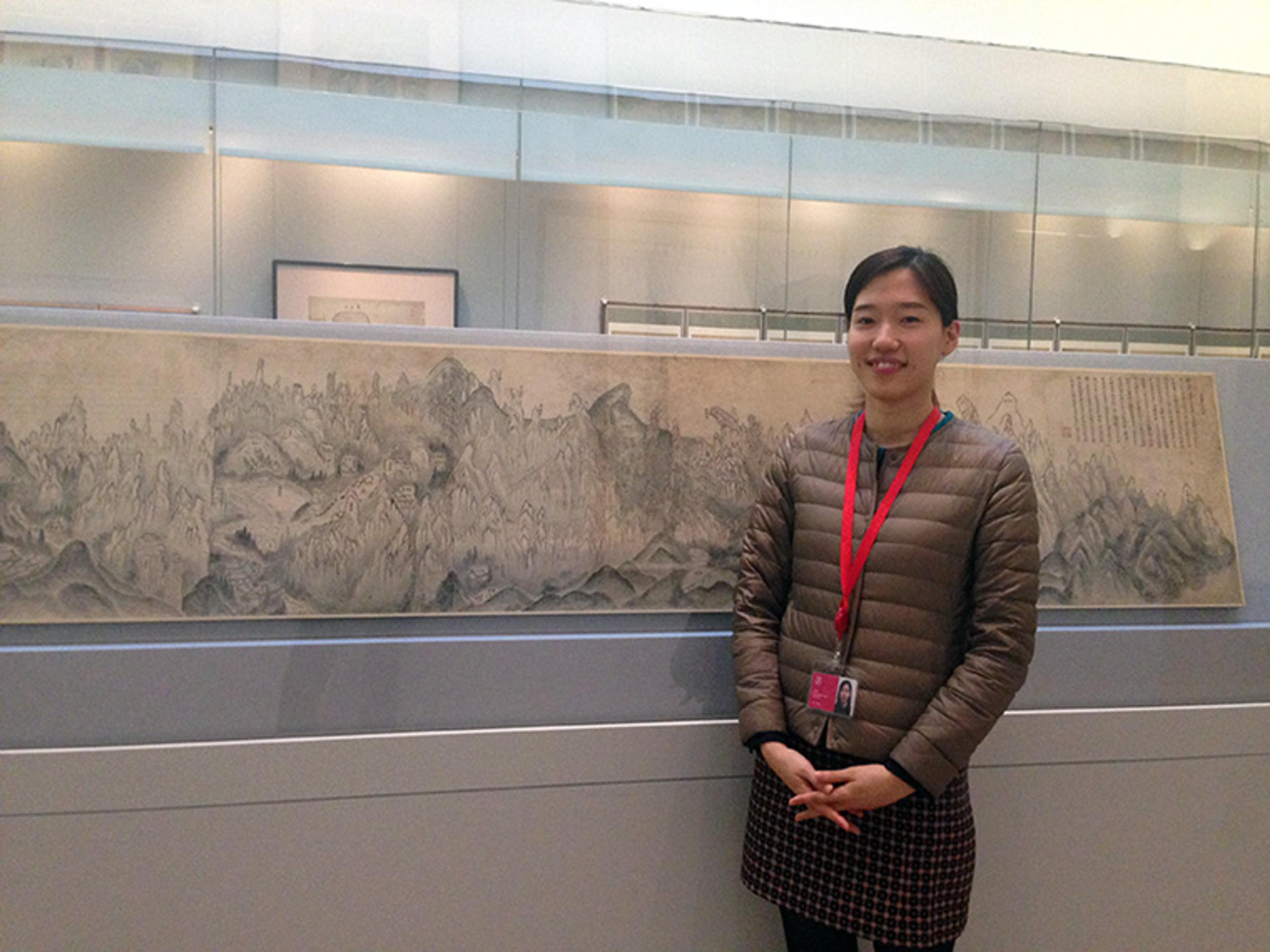
The author in gallery 233, standing before General View of Inner Geumgang, a scroll by Sin Hakgwon (2017.185)
«Nearly four months have passed since I began working at The Met as a graduate intern. From the moment I placed my ID card around my neck back in January, I was thrilled to embark on a journey with the Department of Asian Art, an adventure of exploration in one of the largest art museums in the world. A week after starting work, I was assigned to assist in the installation process of the exhibition Diamond Mountains: Travel and Nostalgia in Korean Art, which is organized by my supervisor, Curator Soyoung Lee.»
Before joining The Met, I had spent a year at the National Museum of Korea in Seoul as a curatorial assistant, responsible for the Painting and Calligraphy Gallery. That experience had given me some insight into the installation processes for pre-modern paintings. Still, it was an extraordinary moment for me as I witnessed paintings I had seen in Korea be moved to the heart of Manhattan and installed, one by one, at the Museum.
Installation view of Jeong Seon's Album of Mount Geumgang, 1711, on loan from the National Museum of Korea
I first had a chance to appreciate the Album of Mount Geumgangby Jeong Seon, perhaps the most iconic piece of this exhibition, when it was exhibited in Korea last year to commemorate its designation as a Treasure. (This album, which was painted in 1711, comprises thirteen images; to avoid overexposure of these light-sensitive works, the National Museum of Korea and The Met chose six different leaves to display at each venue.) At the time, I was surprised by the outstanding condition of this album and how well it highlighted the unique features of Jeong Seon. But this year, at The Met, I have appreciated the artist's work afresh in the context of the exhibition's themes of travel and nostalgia, and have come to understand how these pictorial records of his journeys represent the culmination of travel trends to the Diamond Mountains during the late Joseon dynasty.
Since the album is the earliest surviving dated work of this artist's oeuvre, as well as the oldest set of paintings in the exhibition, the six leaves from the album were installed at the front of the exhibition gallery so that people can enjoy them first (above). This shows how much thought Soyoung Lee, exhibition designer Zoe Florence, and other staff put into the details to maximize the impact of their work. They clearly valued the intrinsic beauty and subject of each piece, arranging them carefully based on such factors as the date of each work or the order of the scenes depicted.
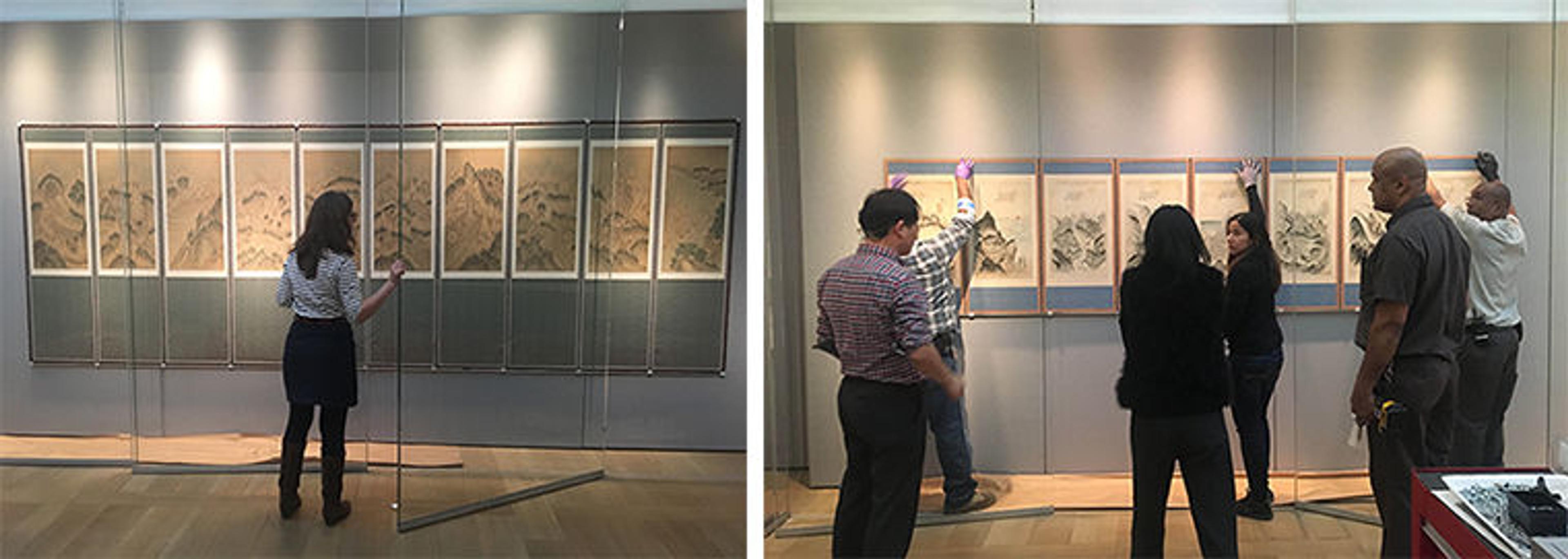
Left: Jessica Kuhn from the Department of Asian Art inspecting the ten-panel folding screen Mount Geumgang, by an unidentified artist, on loan from the Seoul Museum of History. Right: Museum staff and couriers from Korea install the eight-panel screen Mount Geumgang, by Sin Hakgwon, a follower of Jeong Seon, on loan from the Amorepacific Museum of Art
The staff also constantly discussed such specifics as how people would move through the gallery during crowded times, where one's eye level would fall in relation to the height of the art, the horizontal view, the stability of the displays, the brightness of the lighting, etc.
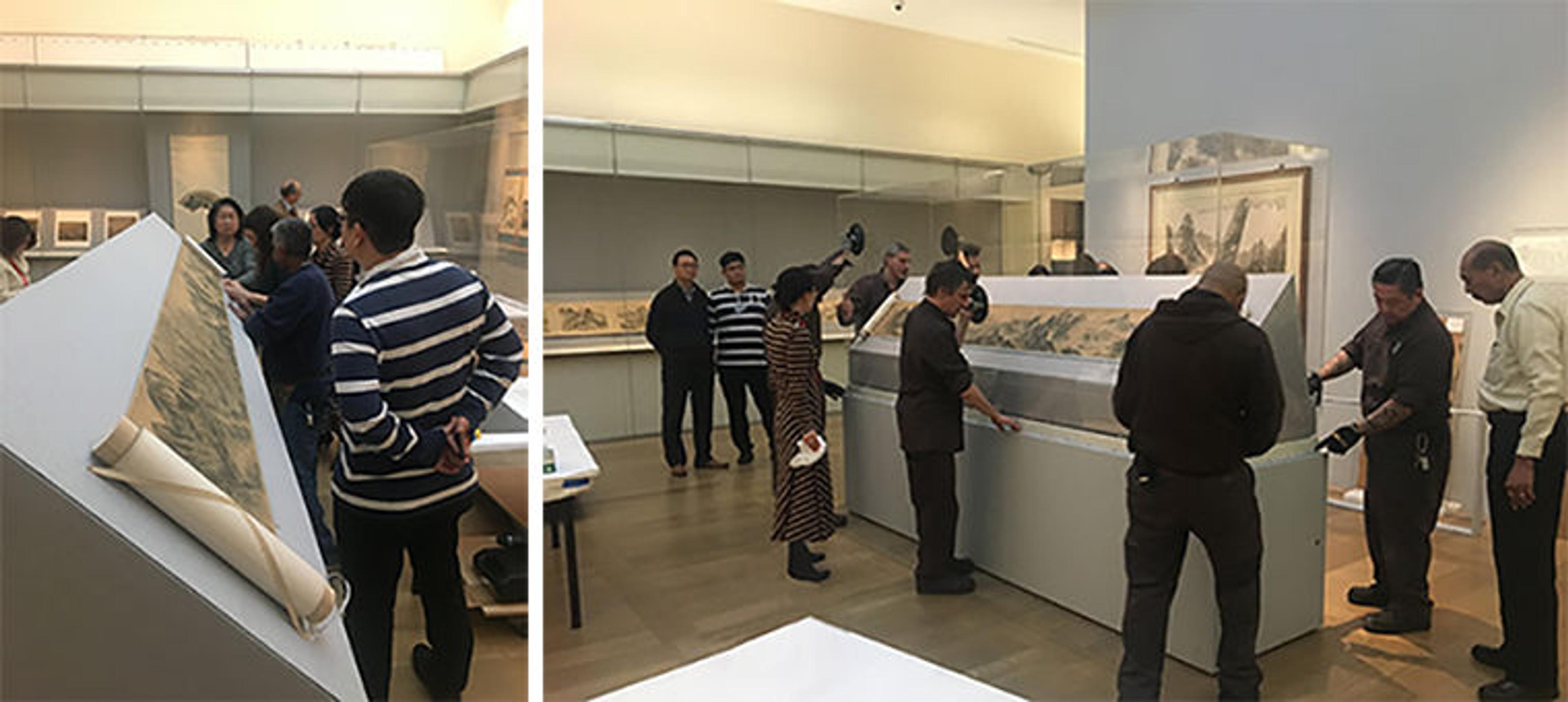
Left: Installation view of General View of Mount Bongnae by Jeong Seon, on loan from the Leeum, Samsung Museum of Art. It is the only handscroll by this painter. Right: The Met staff places the plexi top on the case and makes final adjustments
Here at The Met, the various operations that go into making an exhibition—such as the transportation of artworks, documentation for the movement of artworks in and out of the Museum, lighting, production of labels, mount making, and overall administration—are divided and handled by appropriate experts. While I was walking around the gallery, I was able to watch these many specialists as they gathered and discussed how to display different types of paintings, such as screens, hanging scrolls, hand scrolls, and albums.
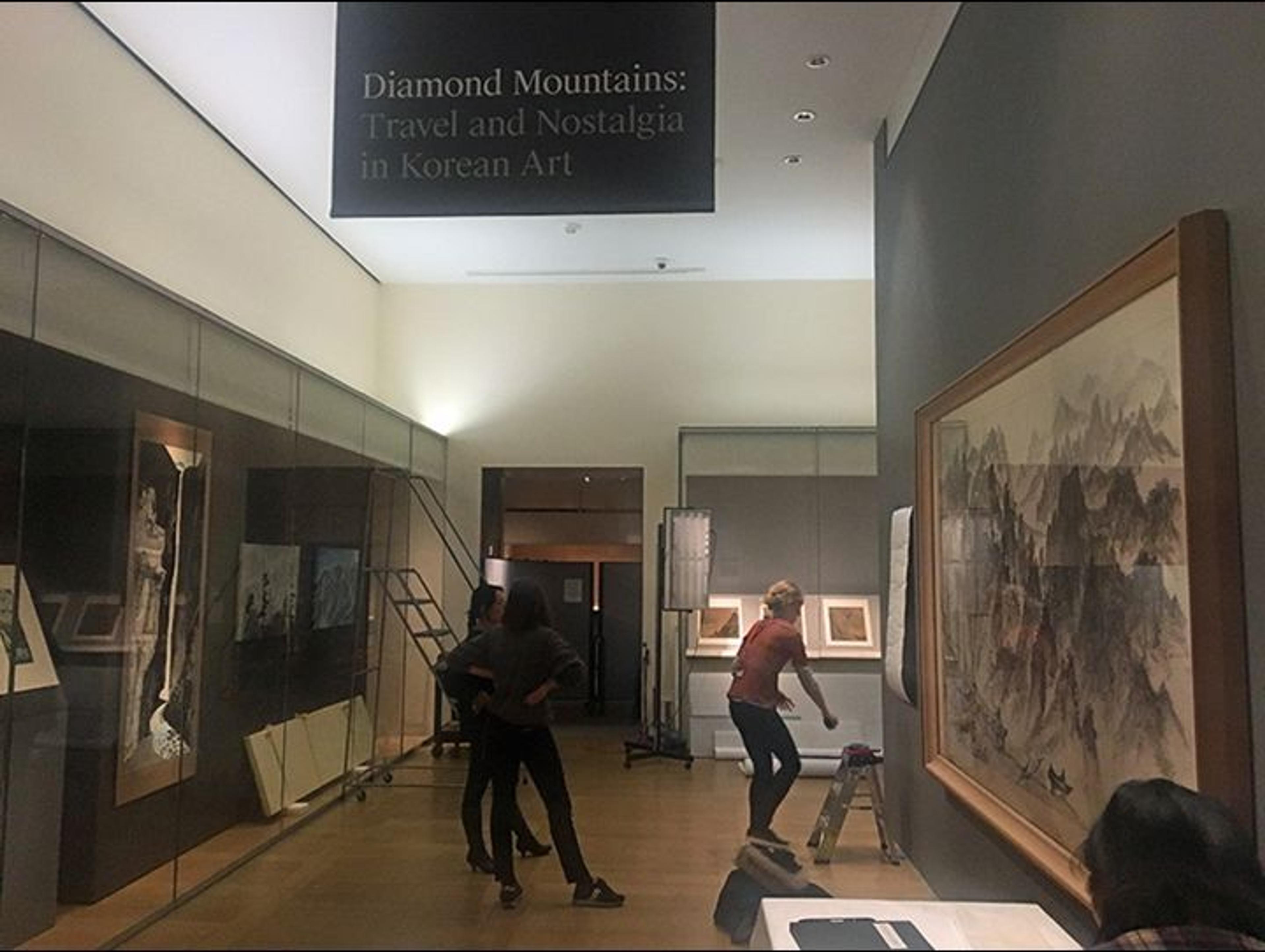
Left: Curator Soyoung Lee and exhibition designer Zoe Florence oversee the placement of the intro panel
Each time a section of the installation was finished, I felt a dramatic space had been created, with every planning idea fully realized. Although at first I had found it impossible to imagine how the space would look when I was wading through the gallery full of people unpacking and arranging paintings, the exhibition as imagined by the curator was magically brought to life when the installation was complete.
As the installation wound down, all of a sudden it hit me that my life at The Met was fully underway: although I had barely overcome the jet lag of arriving from Korea less than two weeks prior, I was immersed in magical travel around the Diamond Mountains, right here in New York.
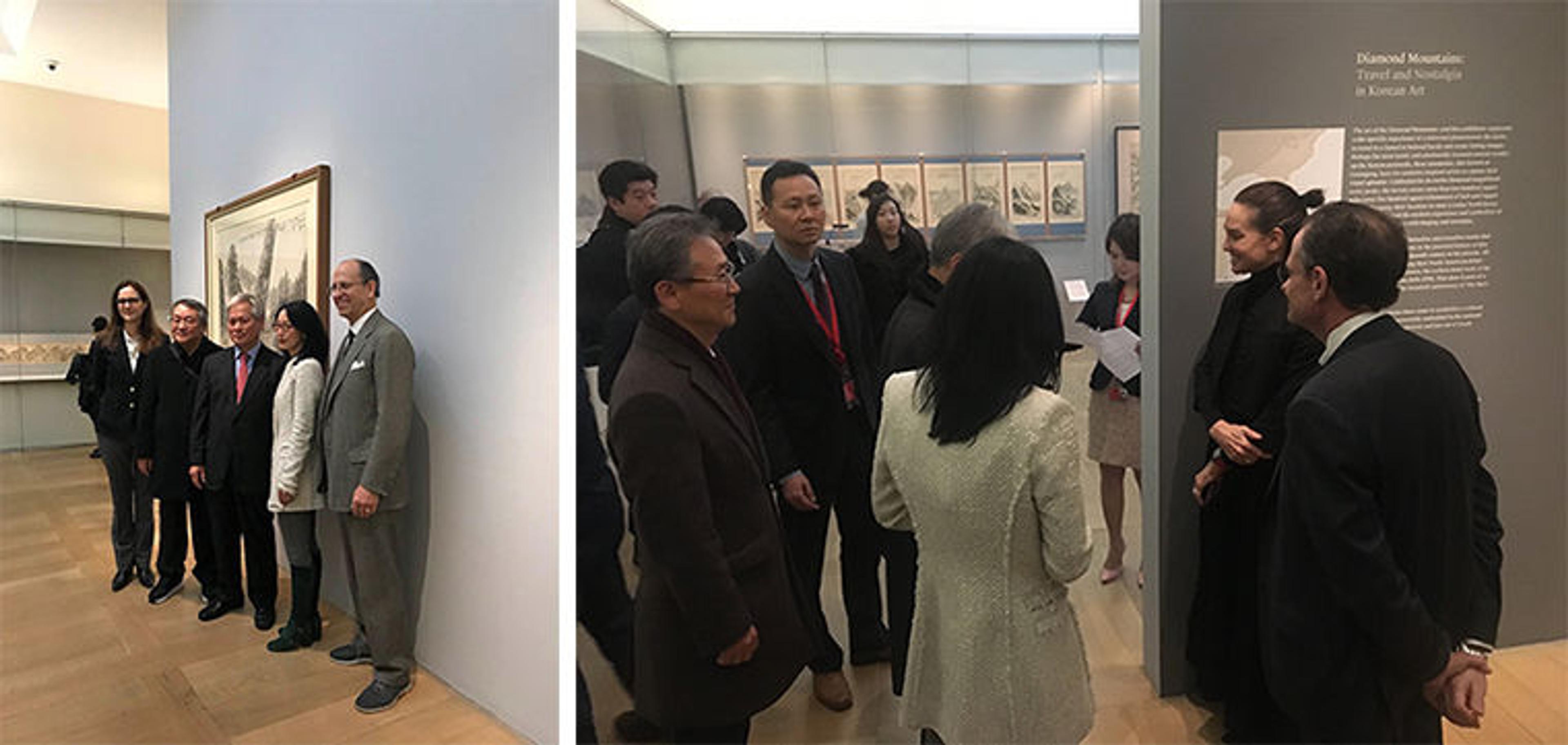
Left: (from left to right) Quincy Houghton, deputy director of exhibitions; artist Shin Jangsik; Bae Kidong, director-general of the National Museum of Korea; exhibition curator Soyoung Lee; and Mike Hearn, chairman of the Department of Asian Art, during the press preview on February 6, 2018. Right: Exhibition curator Soyoung Lee (center); Carrie Rebora Barratt, deputy director of collections and administration, and Daniel Weiss, president and CEO of The Met (both at right), with guests from Korea, just before the start of the press preview
